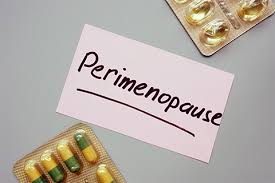We all focus on what menopause is but none of us discuss what perimenopause is. Fret not! I’ve got you covered. All the knicks and cranks of what “Perimenopause” is and how to deal with it are given below.

What is Perimenopause?
It refers to the time when your body is making the natural transition toward menopause. Women may feel the symptoms at different ages. As every female body is different some women might experience changes in their 40s and others in their 30s.
Nevertheless, once you have gone through 12 Consecutive months without menstrual periods. You have reached menopause, and the perimenopausal period is over.
Symptoms of Preimenopause

During this transition, these are some symptoms that might be common.
1. Decreasing fertility
As the ovulation cycle changes, the ability to conceive decreases. Which also marks the start of the menopausal period.
2. Mood Changes
The majority of the women experience drastic mood changes. Women become more vulnerable to irritability and depression during this phase.
3. Vaginal and bladder problems
The most common complain that a lot of women have reported during this phase is vaginal and urinary infections. Due to the decrease in estrogen the urinary tract becomes prone to infection.
4. Changing cholesterol levels
Estrogen decline increases the production of low level lipoprotein cholesterol which contributes to the risk of heart attack.
5. Hot flashes and sleep problems

Sleep problems and hot flashes are often detected in perimenopausal women. Although the intensity , length and frequency varies from person to person.
6. Irregular periods
The most common symptom is irregular periods. As the ovulation becomes more the mesnturel cycle tends to become unpredictable. The flow is more likely to be either heavier or lighter. At this point you may even skip your period. When you start noticing these symptoms, it is quite likely that you may be in early menopause.
Although these signs might seem normal for anyone experiencing perimenopasue, if any of the symptoms persist it is always advised to go see a doctor.

